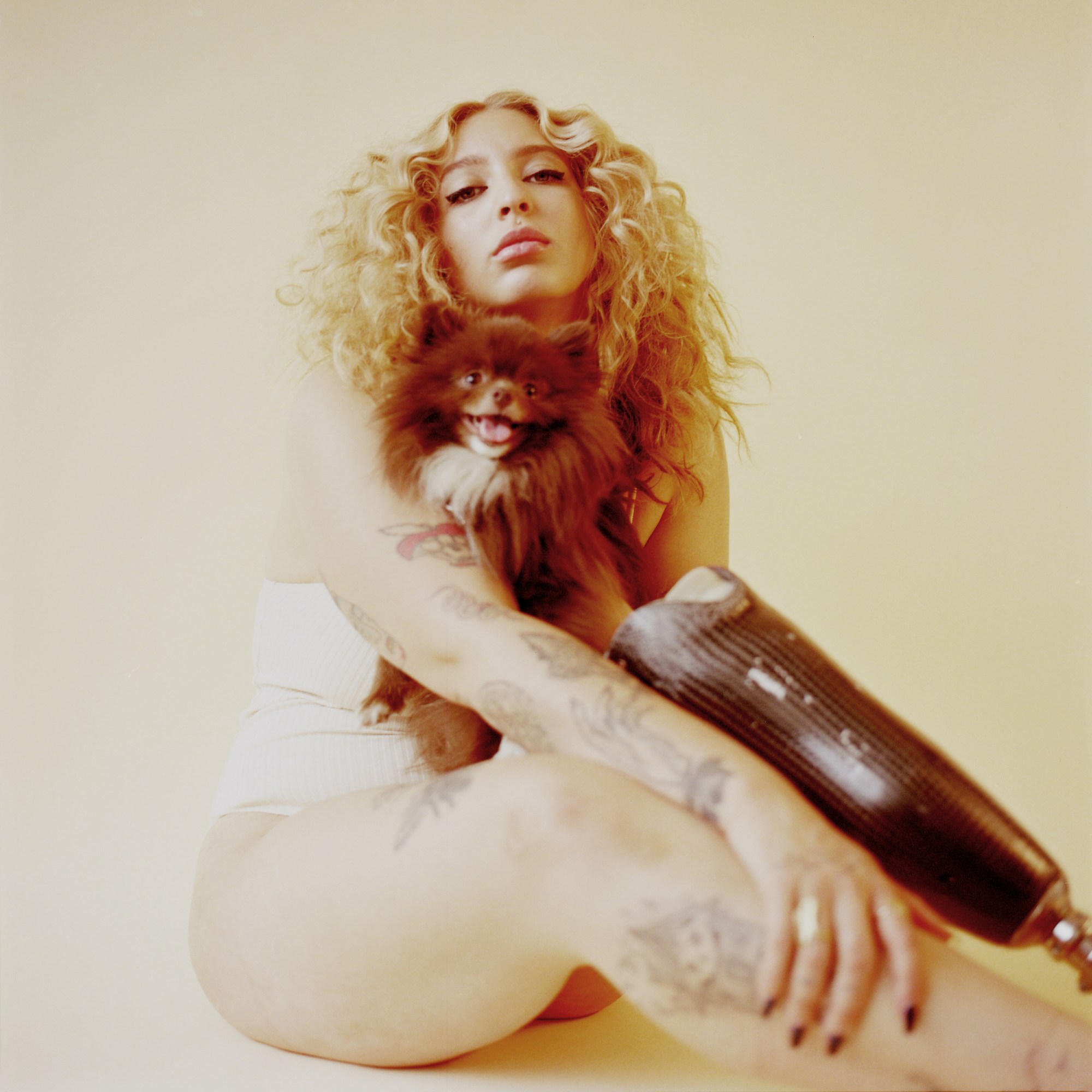Mira Mariah has only been tattooing for four years, but in that time the 27-year old artist has garnered quite the following on Instagram, where she posts her whimsical, linear designs under the name of @girlknewyork. Mariah tattoos out of Fleur Noire in Williamsburg, and designs clothing available on her site. She studied womenswear design at FIT, and many of her pieces look like fashion illustrations or reinterpret classical art for the modern age — think mother Mary, texting while nursing a baby, wearing eyeliner and acrylic nails.
While she’s gained recognition as Ariana Grande’s go-to tattoo artist, (“She’s darling and lovely and I look up to her and admire her. I think she’s a symbol of strength, power, perseverance and creativity,” Mariah says), it’s Mariah’s empowering, feminine designs and the inclusive nature of her work, often dealing with “the poetry of woman life or girl culture” that have made her one of the more popular artists in New York City. Mariah’s portraits feature women of all shapes and sizes, celebrate self-love and self-acceptance, or mark the beginning or end of a significant event.
“Some of them are holding children, some of them are visibly and not passingly trans, some of them are fat, some of them are not fat, or have hip dips, or other qualities that are normal, but not often seen in art… I’d be doing myself, my friends, and my peers a disservice to only be illustrating one singular image,” Mariah explains. “For some people, tattooing is emotional because our bodies are made into a commodity and that’s really horrible. A lot of people, myself included, especially as a disabled person with such a visible physical disability, use tattoos as a method of reclamation for our own bodies.”
i-D spoke to Mariah about her style of tattoo work, the nature of her art and activism, the spectrum of disability, and how the creative community can be more accessible to all people.
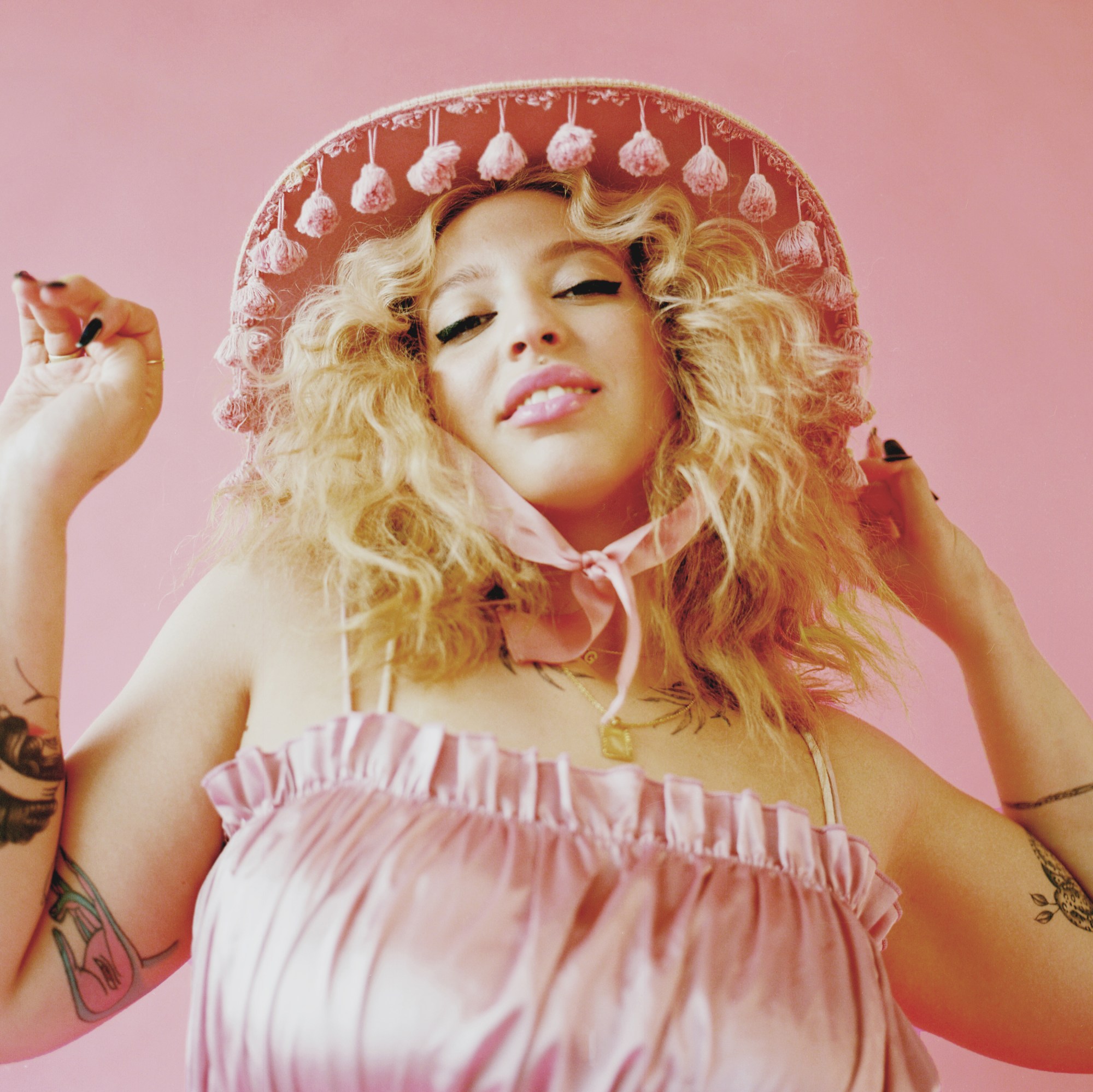
When did you get your first tattoo?
I was 19-years-old. I got a needle and thread on my birthday on St. Mark’s Street. Everyone’s first tattoo is on their rib cage. I hadn’t gotten my ribs tattooed in a while and I have a huge traditional black snake on my belly, but I got two little names on my underboobs and I saw Jesus. She’s doing great. Holy shit, that hurt so bad… I think it’s important for me to get tattooed frequently to remind myself that tattoos hurt. That tattoos are permanent. That they’re emotional, they’re intense. I’m a better tattoo artist every time I get a new tattoo.
Do you usually have something specific in mind?
My respect for getting tattoos for myself is so low, it’s ridiculous. I’ll be like, ‘Wouldn’t it be so funny if I had a Chanel bag tattoo?’ Then five days later I have a tattoo of a Chanel bag. Or even an hour later. I’m really spontaneous and love getting tattoos that begin with that sentence…
This one is kind of sentimental, but my daughter wrote ‘Frida is special,’ for a school project about Frieda Kahlo. Her and I both love Frida very much and Frida had one leg and was queer and was Latina and was an artist and I just feel so validated by that.

Tell me about your first tattoo apprenticeship. What was it like?
Scary! It was also exciting though because seeing the transformation in four or five years that tattooing has had has been crazy. Like, totally unreal. At that time, it wasn’t quite what it is now. There weren’t so many artists to go to for fine line tattoos. Feminine, girly tattoos didn’t feel as accessible as they do now. So, I was really excited to come up during that time and make my own style, my own voice. The idea of tattooing and feminism going together was really very new, but now it almost feels tired.
Traditional tattoos are great. I love traditional tattoos mixed with Japanese tattoos. That stuff is so cool, but when that’s your only option that sucks. In the same way that being a stay at home mom is really cool and an amazing choice — dedicating yourself to your family and making sure you have a certain quality of life for your family is an amazing choice. But it becomes shitty when it’s your only choice.
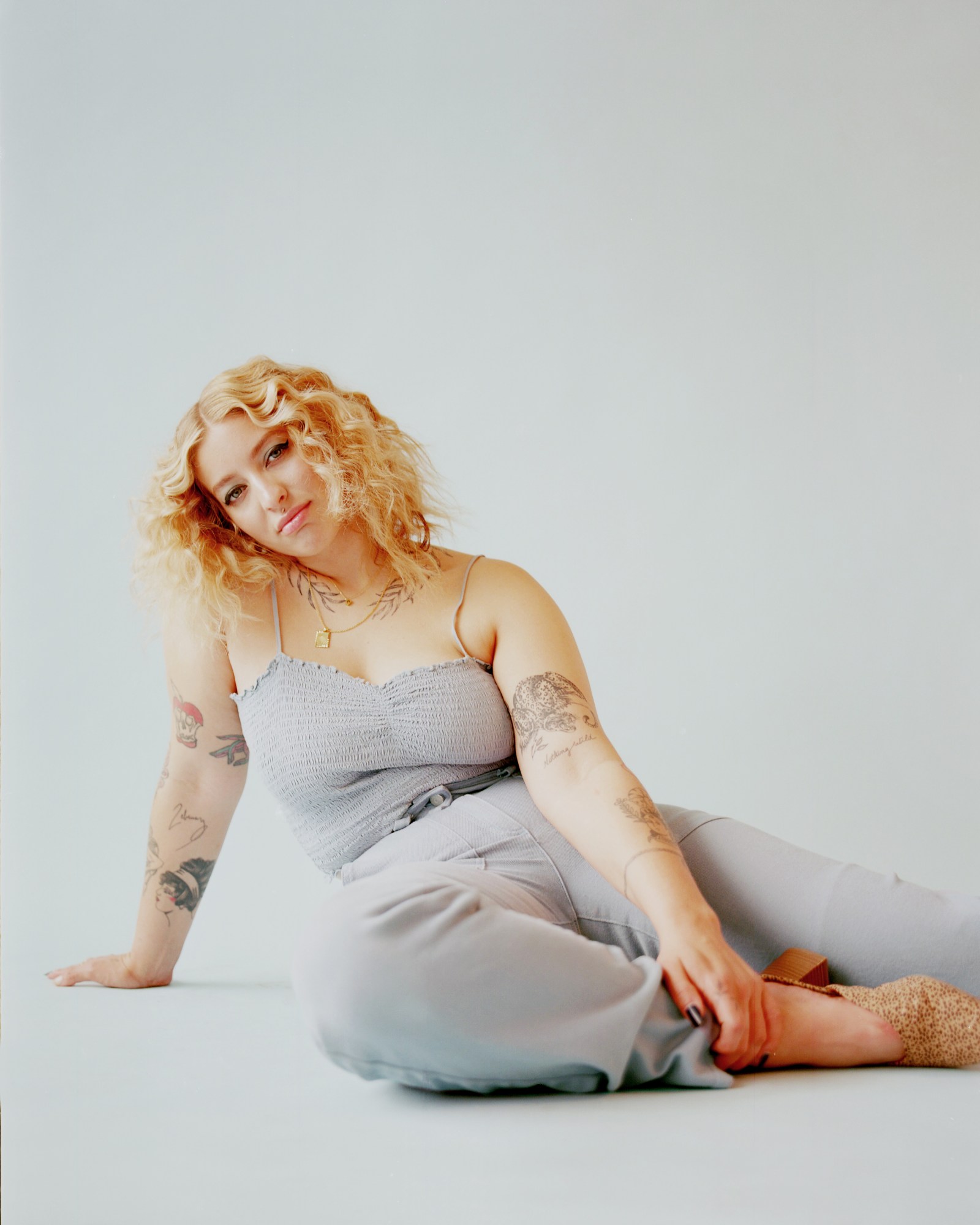
How would you describe your style of tattooing?
I really enjoy doing portraits of women that deal with the poetry of woman life, or girl culture. You know? Life as a girl is so interesting, emotional, and diverse that I love making artwork that is part of the conversation about that. A lot of my drawings are inspired by my background in fashion and they kind of feel like fashion illustrations. Also that I rarely pick up the pen. There’s a lot of connected, linear stuff that I think is symbolic of how I feel about life in general.
You’ve done a ton of really cool adaptations of classical art. Do you have any favorites?
Yeah, I’ll read a book about something and then be obsessed with it. I read like three books about Gustav Klimt and I was just so interested in him, his work, and in making artwork that was similar to his, but modernized — by making the girls African, making them fat, or something. Growing up Puerto Rican Catholic, there were all of these beautiful portraits of saints around me. We really love that saintly imagery, so using that and again, modernizing them — giving them cell phones, making them have elements that we loved about the myth, the folklore, religion or spirit, and then adding elements of fun. Sometimes it’s just fun! Like, mother Mary nursing and texting with long acrylics and eyeliner. It’s a message, but it’s also just supposed to be tongue and cheek.
I almost have to lighten [my designs] because so much of what I spend my life and my art talking about is so heavy, you know, children being separated from their parents at the border, and in other ways, the way we as a country have treated our Native American communities, abolished them completely, the way our bodies are treated as women in this country right now. So, much of that is so heavy that sparkles are necessary.
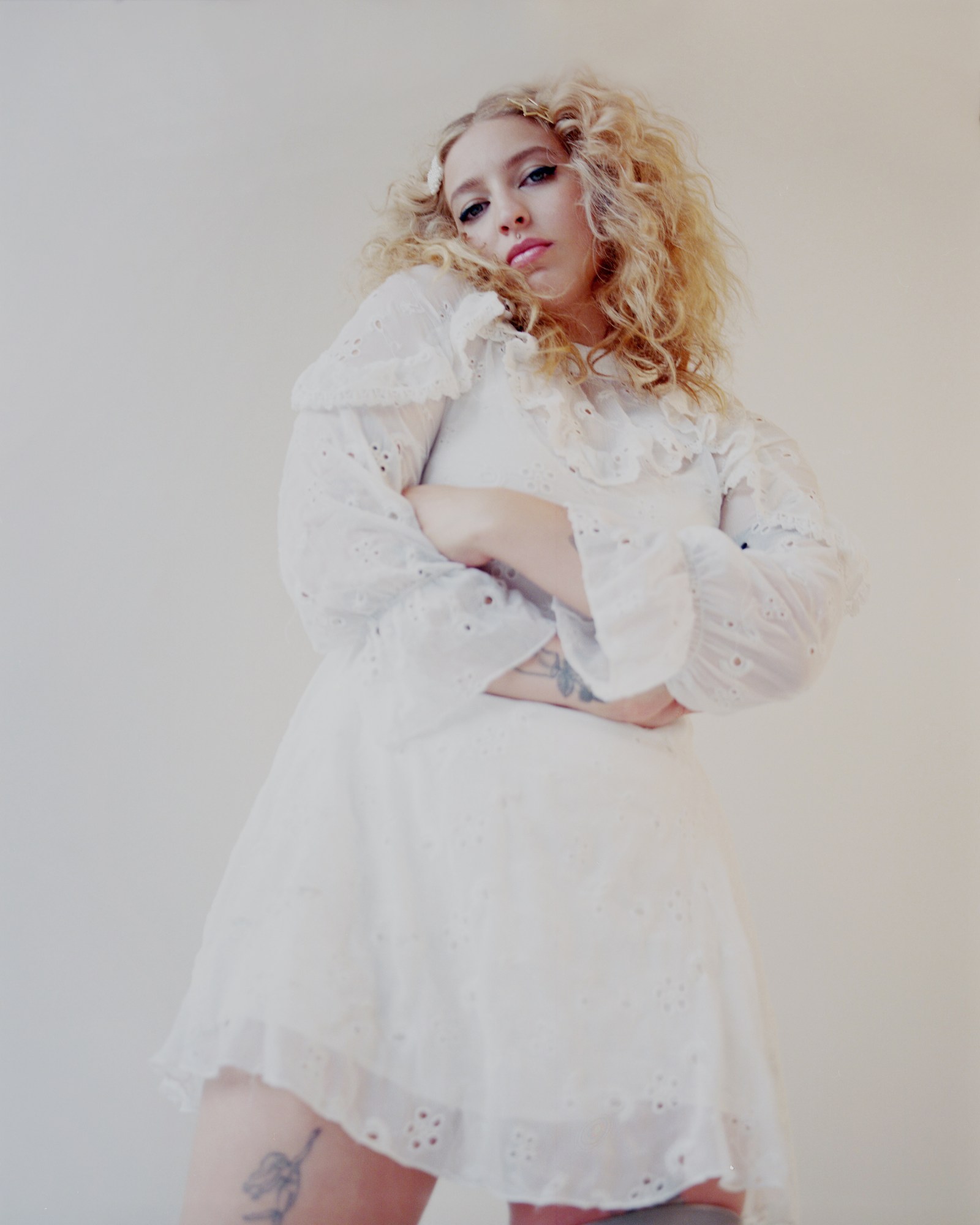
In what ways do you try and empower women through your art?
I try to make sure that my artwork is not, while it is from my perspective, is not of a singular vision. Women have varying body types, hair types, especially when I’m drawing them in varying situations — some of them are holding children, some of them are visibly and not passingly trans, some of them are fat, some of them are not fat, or have hip dips, or other qualities that are normal, but not often seen in art… I’d be doing myself, my friends, and my peers a disservice to only be illustrating one singular image.
Why do you think that tattooing often becomes this super emotional experience?
For some people, tattooing is emotional because our bodies are made into a commodity and that’s really horrible. A lot of people, myself included, especially as a disabled person with such a visible physical disability, use tattoos as a method of reclamation for our own bodies.
You make this decision. You pay for it. It’s yours and it cannot be undone. There are so many decisions being made about women’s bodies and as a disabled person, there are so many people who think they know what’s best for your body — that doing something to your body that is so visible and so permanent is such an intense reclamation… I’m very honored and humbled that my community has allowed me access to their bodies and I am just so incredibly grateful that I’ve been given this opportunity to be a part of their story, be a part of people’s journey to self-love, self-acceptance, marking the end, or the beginning of something.
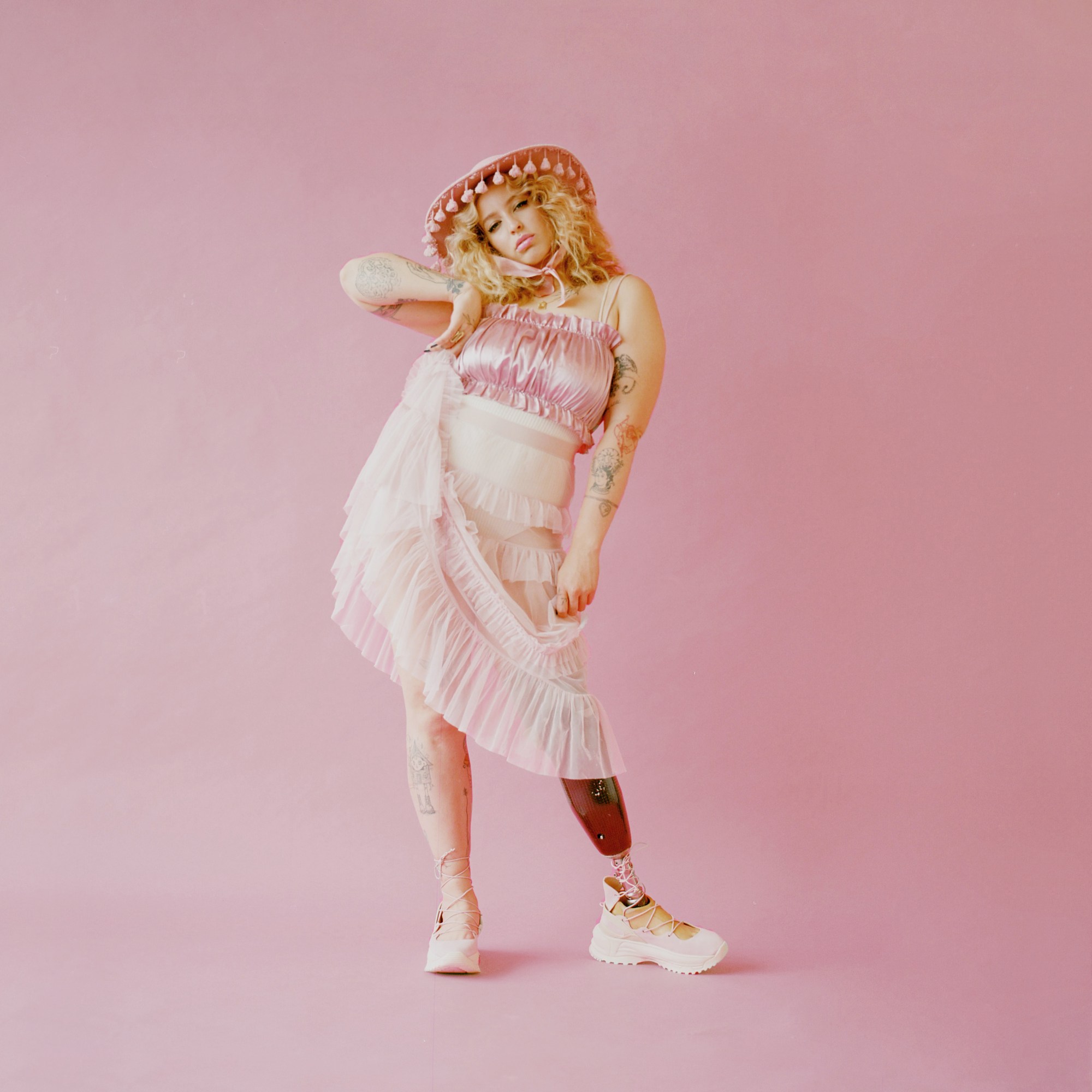
How has your disability affected your work?
My disability affects my work in every possible way, from the method in which I tattoo because I don’t use a foot pedal, to the way in which I schedule because I am upfront with people that appointments might get moved around based on my level of ability. To the emotion and the poetry behind my work, which so much deals with accessibility, levels of ability, and the physical part of being disabled, which I experience as a visually disabled person, and the emotional spirit of being disabled, which all people that are disabled experience.
Disability, I’ve been thinking a lot about recently because I have to navigate the world as a disabled person. I think that we have these ideas about what it means to be disabled, where you are or you are not able to do a task, but so often it’s, ‘sometimes I can do this task.’ Like, sometimes I can walk up six flights of stairs to go to my best friend’s house and sometimes I can’t. I think that as a community, we need to take people seriously when they say these things and also trust people when they say they can do things. And that I think will really help creative communities include disabled people more often.
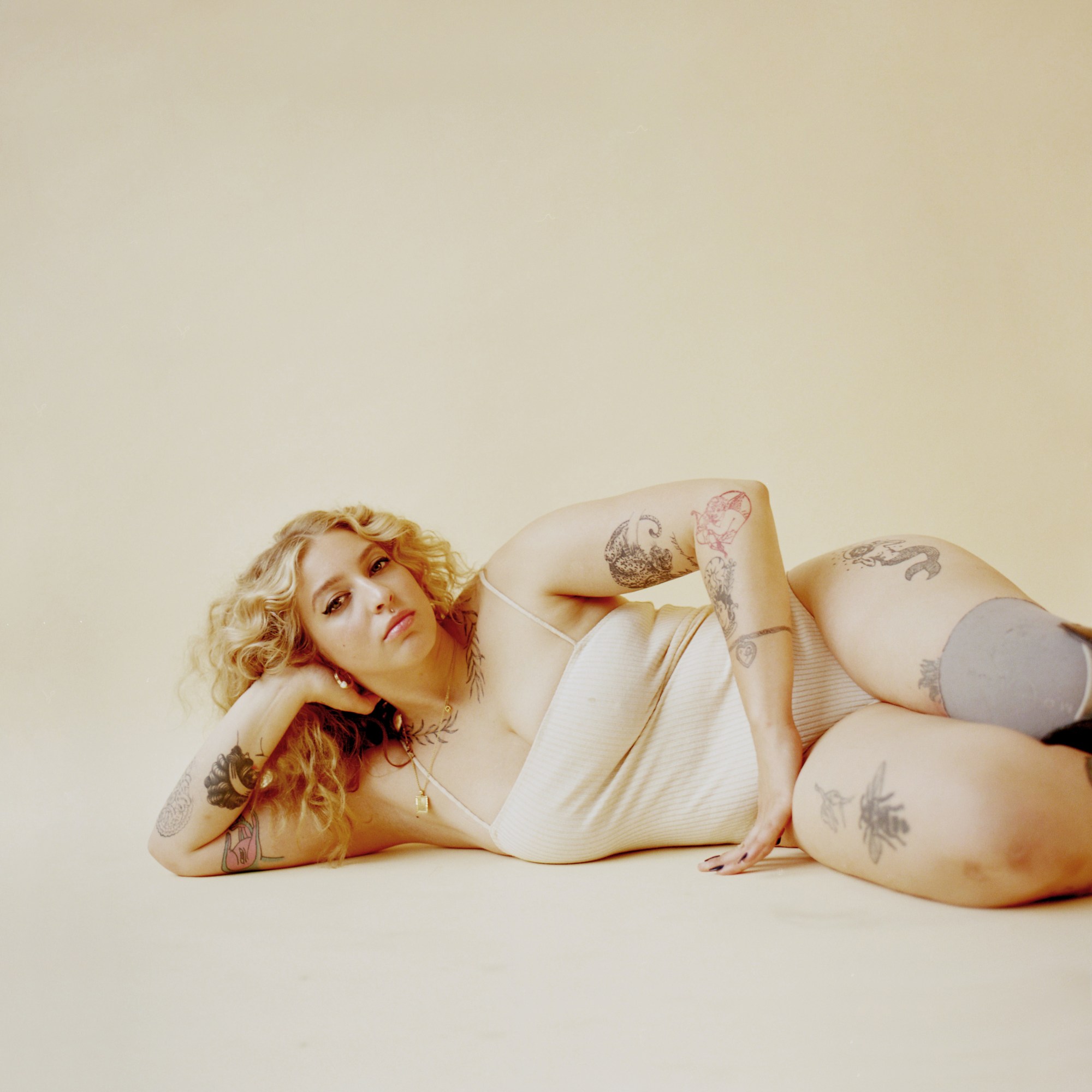
If we can communicate as much as possible about the accessibility of events, the creative community will also increase it’s accessibility. Accessibility for every person in the whole world is a spectrum. There are days that I’m more able bodied and days that I’m less able bodied and that fluctuates. It’s normal. There’s a fluctuation daily and then throughout your life, for all people.
And when someone says they can or can’t do something, we need to just trust them.
Trust them. And when someone says they can’t do something, I think we need to work really hard with each other to not question it, take it personally, or ask how they’re disabled – to just be like, ‘okay‘ and move on. That’s really important to me.
Credits
Photography by Jingyu Lin
Makeup by Yuui Vision
Hair by Arpita Brahmbhatt
